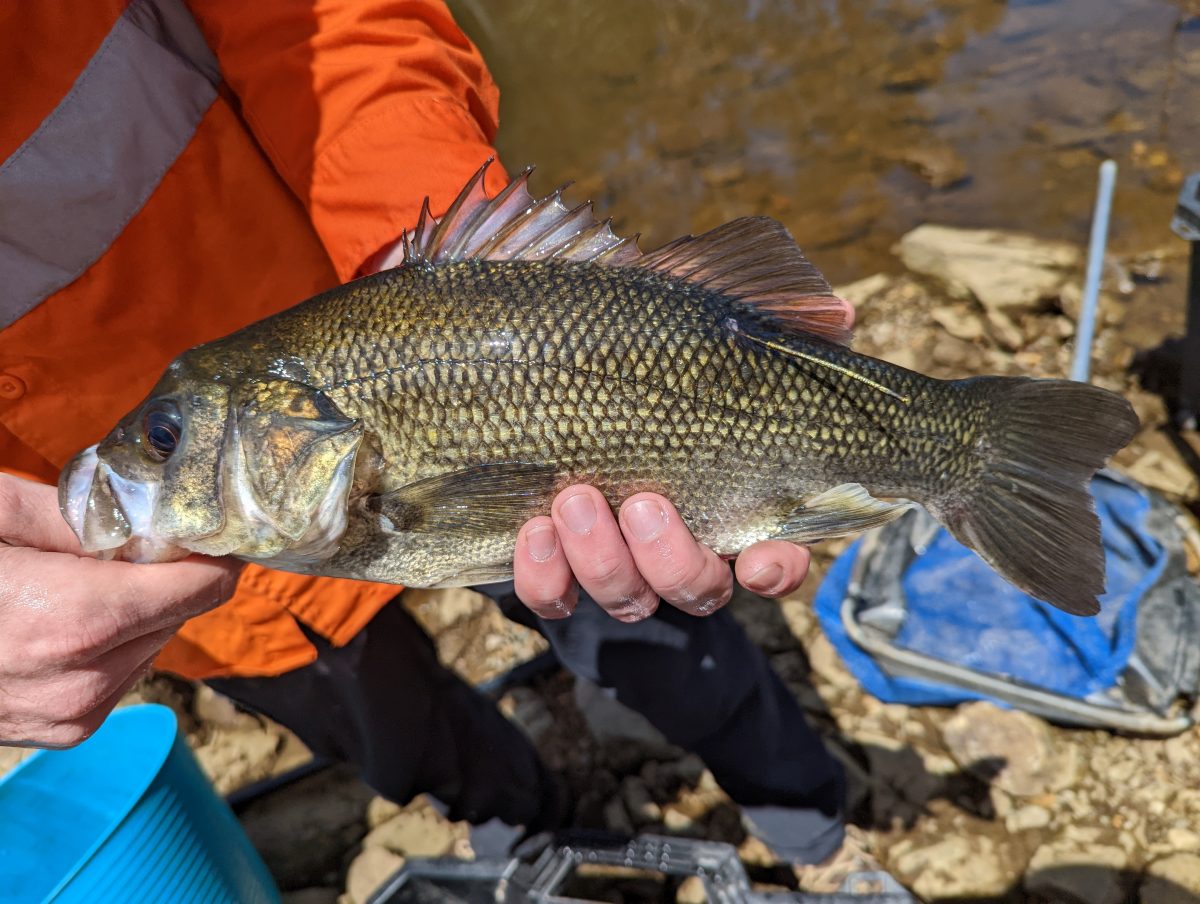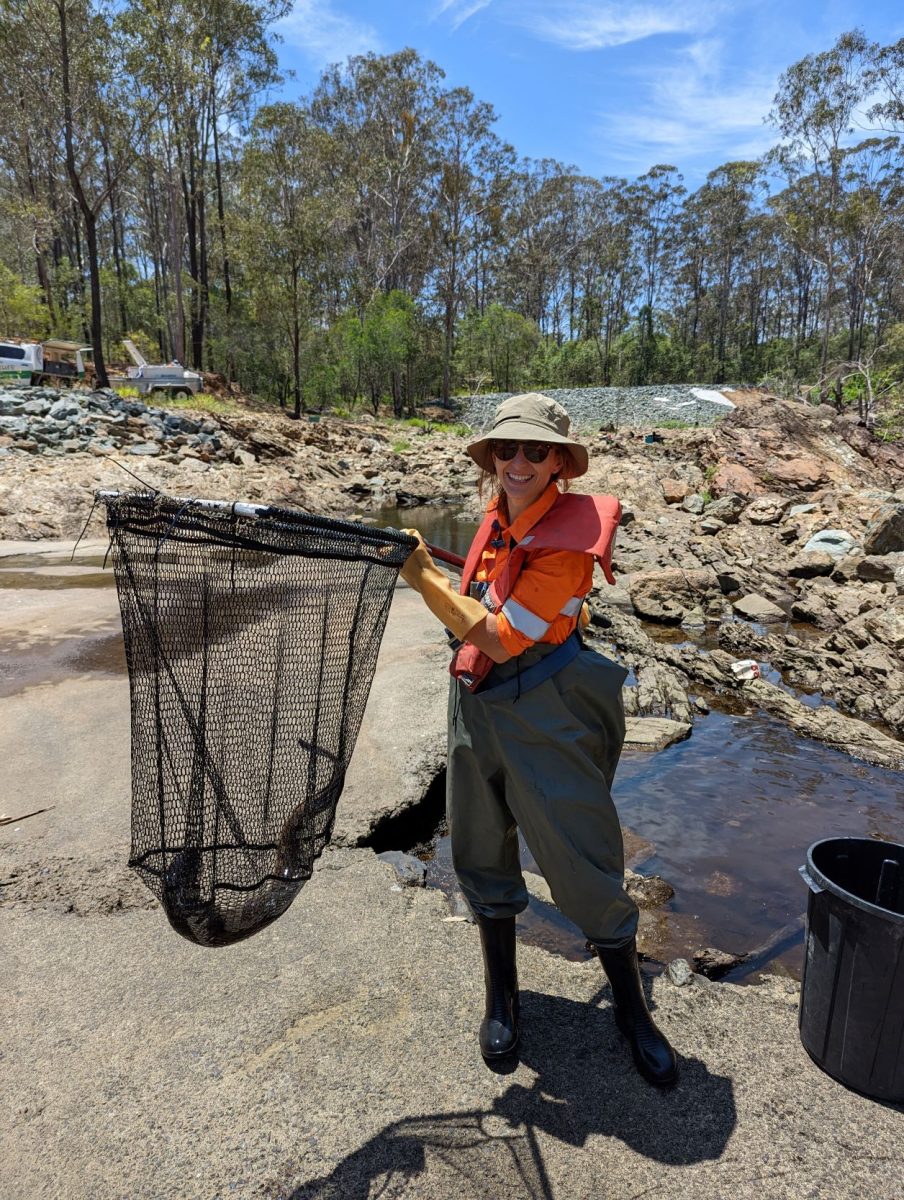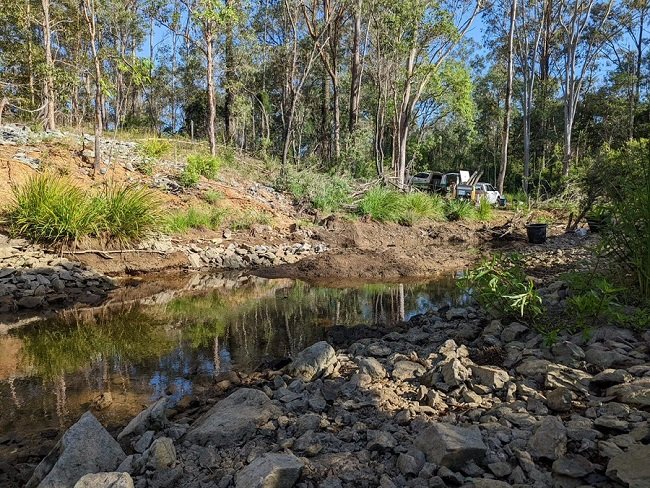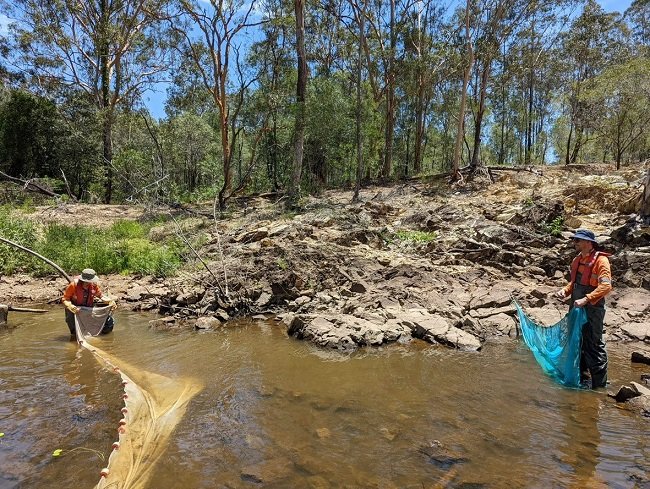Freshwater creeks across Southeast Queensland are typically home to a variety of native and exotic fish species. Seasonal flooding can potentially damage many of these creeks including impacting on their banks, with large amounts of rock and sediment then being washed into the creeks’ main channel. Reductions in connectivity and flow can occur as water levels recede, leading to poor water quality and entrapment of remaining fish. Remediation works are commonly required to remove the barriers to improve connectivity for fish movements and migrations.
The aquatic team at Ecosure were recently engaged by a client to undertake a fish salvage operation at a creek spillway in Brisbane’s north to relocate trapped fish prior to commensal of remediation works. Using backpack electrofishing together with seine nets, the team caught and relocated over 800 native fish from 15 species. Some of the largest individuals caught were stocked Australian bass and golden perch, as well as longfin eels and eel-tailed catfish; while the smaller bodied species included carp gudgeons, empire gudgeons, Agassiz’s glassfish, and bull rout. As well as fish, two species of invertebrates were also captured and relocated. Ten Australian River prawns (Macrobrachium spp.) and a single river swimming crab (Varuna litterata) were captured. The team used a large, purpose-built fish transporter to relocate all native fish to a nearby dam for release. Over 55 invasive individuals such as tilapia, mosquito fish, guppies and a goldfish were also captured, removed and euthanised as required to do so in accordance with our fisheries permit.
For ecologists, it is always fantastic to be able to conduct field work that makes a difference. By relocating so many native fish we were able to save these individuals and bolster populations of natives in the dam. Furthermore, the removal of invasive species such as tilapia may reduce resource competition and predation for native species in the creek. The icing on the cake is that the improvements to waterflow and connectivity following construction works will reduce the risk of fish kills in this creek in the future and improve migration pathways for species such as long finned eel and freshwater mullet.
Overall, the team were able to relocate many native fish allowing the much-needed remediation works to commence with minimal impact on the resident fish community. While it was a hot and physically challenging day for all, the team managed to get the job done and achieve a great outcome.




